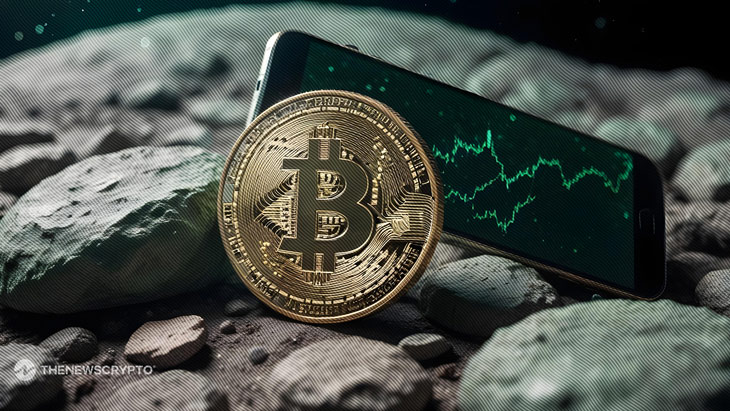It’s been less than a year, and yet it’s hard to remember Bitcoin without a spot ETF. Just as Bitcoin before the advent of stablecoins, centralized exchanges, or block explorers, is hard to fathom now, the pre-ETF times feel dark and distant. Bitcoin didn’t need the SEC to rubber stamp an ETF to validate its existence, but it’s no exaggeration to say that Bitcoin is in a much better place today because of it.
The 10 Bitcoin ETFs that have been approved since January in the US have provided institutional investors – and consumers – with a regulated, secure way to gain exposure to BTC without the challenges associated with direct ownership of the cryptocurrency. This has naturally served to increase Bitcoin’s addressable market; now pension funds can list it on their balance sheets. But more than that, it legitimized BTC as an asset and in the process put an end to much of the flak crypto users have been subjected to for years.
If you just wanted a Bitcoin ETF to “pump your bags,” your wish has been granted. But if you wanted to see it approved so that former haters, from investment bank CEOs to Senators, would see the light, you’ve also gotten something out of the deal. Even those Bitcoin maxis who claim to have no interest in institutional adoption would be forced to concede if pressed that the ETF era has gone surprisingly smoothly. Almost 1M BTC has been bought up by institutions, while the underlying Bitcoin network has continued to serve its purpose without interference from those stockpiling it in droves.
Bitcoin Gets Its Game-Changer
It’s easy to dismiss the Bitcoin ETF as being of interest to institutions and their clients and no one else, but that would be a mistake. The approval of the first Bitcoin spot ETFs this year has improved access to crypto assets for users all over the world, even if they’re buying it on spot exchanges before withdrawing and self-custodying it.
The fact is that the Bitcoin ETF couldn’t have come about had major industry players, from exchanges to custodial services, not tightened up their compliance, security, and reporting. This has improved the crypto industry for all participants, regardless of their net worth or investment status. As for the effect that the ETF has had on increasing demand for BTC, this impact is hard to overstate.
On a recent episode of the VALR podcast, hosted by Farzam Ehsani, CEO of the eponymous crypto exchange, guest Eric Balchunas spoke frankly about the difference the ETF has made to Bitcoin. According to the Bloomberg Senior ETF Analyst, Bitcoin ETFs have accrued over $18.5 billion in net flows – a benchmark that it took gold ETFs four years to hit, despite them being perceived as hugely successful at the time. The IBIT and BlackRock Bitcoin ETFs have proven particularly successful, each hitting $20B in a little over 120 days. Bitcoin hasn’t just broken price records this year – it’s been breaking records on Wall Street, where investors can’t get enough of it.
The Pros and Cons of ETFs
ETFs can be accessed by a much wider tranche of investors than is commonly perceived, since many ordinary individuals benefit from it through pensions and similar investment funds that they have exposure to. Bitcoin ETFs can also be purchased by anyone with a brokerage account, adding millions of Americans to the list of new BTC buyers this year. But that’s not to say the ETF is for everyone, as Eric Balchunas was quick to point out on the VALR podcast.
As he conceded, “For a true hardcore believer, I think you want your own wallet. The whole point is that it’s yours and the government can’t take it. So you’re not going to get that with an ETF. If the government were to confiscate Bitcoin, BlackRock would probably comply.” If you’re the sort of Bitcoiner who wants to custody their own coins – and potentially physical gold too – then the ETF will remain an abstract concept. But for ordinary investors who want to get involved but don’t want to manage their own wallet, the ETF is the perfect vehicle. It provides all the upside to holding BTC without the downside: security threats and the risk of losing private keys.
Bitcoin spot ETFs have made it easier for institutions to allocate funds to crypto, acting as a price stabilizer due to large institutional inflows providing long-term support for Bitcoin’s price. This has helped to reduce some of the volatility typically associated with BTC, making its price more stable over time. Because institutions and retail investors trade Bitcoin ETFs on regulated exchanges, the ETF has also helped to create more liquid trading conditions, with liquidity from large institutional players improving overall market depth.
From a technical and ideological perspective, Bitcoin is still Bitcoin, and no amount of institutional adoption will ever change that. But in every other respect, the ETF has been a genuine game-changer for Bitcoin, crowning its 15-year ascent to become the world’s favorite alternative asset.








